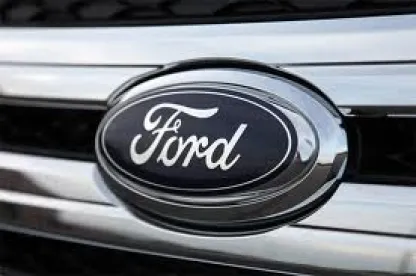Manufacturers generally understand the importance of utility patents and branding in protecting their creations from unfair competition and confusion of their customers. But the power of the design patent sometimes goes overlooked. While the United States Patent Office has issued over ten million numbered utility patents, it has not yet reached the one-million-mark on design patents. My suggestion to manufactures: consider both for any new product because recent federal decisions may make it very worth your while.
Design patents lie at the intersection of regular utility patents and branding. Like trade dress, a patentable design must be non-functional. But like utility patents, a design patent is granted as compensation for advancing the technical arts—more particularly, the art of product design. In other words, a competitor can infringe on a design patent even if a customer would not be confused as to the origin of the product. Design patents are also generally difficult to invalidate, but that comes at a cost on establishing infringement. In order to prove infringement of a design patent, it must be shown that an ordinary observer with knowledge of the prior art would believe that the product’s design is substantially the same as the design shown in the figures of the patent. [1]
So what’s the value of a design patent, then, if a competitor must come so close to the design that an ordinary observer would believe they were substantially the same? For the most part, design patents protect against knockoffs or competitors coming very close thereto. In many industries, especially ones facing global competition, such protection has significant value in and of itself. But perhaps equally important is that design patents can be used to protect a manufacturer’s after-market.
Once a manufacturer sells a product protected by a utility patent into the stream of commerce, the manufacturer’s patent rights are said to be “exhausted.” This is because a patentee is only entitled to profit once on the sale of a patented good, and must generally allow customers to freely repair the product and replace its parts without further permission from the patent owner. As the Supreme Court put it: “In order to call the monopoly, conferred by the patent grant, into play for a second time, it must, indeed, be a second creation of the patented entity….Mere replacement of individual unpatented parts, one at a time, whether of the same part repeatedly or different parts successively, is no more than the lawful right of the owner to repair his property.”[2] However, while a utility patent covering a single part of a patentable device may be very difficult to obtain, a design patent is usually within reach. By protecting the parts of a patented device with design patents, a patentee can prevent competitors from marketing such parts into the patentee’s after-market.
At least that was effectively the recent holding of the Federal Circuit on July 23, 2019 in Automotive Body Parts Association v. Ford Global Technologies, LLC. In that case, Ford has obtained a design patent covering the headlight of one of its cars. The Auto Body Parts Association wanted the court to hold the patent invalid so that it could market such headlights of its own for the purpose of repairing Fords already out there, on the road. The Association argued that Ford’s design patent was invalid because it was primarily functional in that a replacement headlight would need to look the same way in order to match the car. The court rejected that argument, holding that the need for repair parts to match the rest of the vehicle is not the type of functionality that would render a design patent invalid. Ford preserved its exclusive right to market matching headlights for its cars by skillful utilization of the design patent system.
Thus, design patents can fill a critical gap left by utility patents in order to protect a manufacturer’s aftermarket. This is but one reason why I think design patents are destined to take on increasing importance in years to come. Indeed, it is no coincidence that design patents took center stage in Apple v. Samsung, the most publicized and high-stakes patent dispute of recent years. That case went as far as the Supreme Court, resulting in an important opinion on design patent damages. While that ruling can be discussed another day, it suffices to say that the design-patent star is certainly on the rise.
[1] Egyptian Goddess, Inc. v. Swisa, Inc., 543 F.3d 665 (Fed. Cir. 2008) (en banc).
[2] Aro Mfg. Co. v. Convertible Top Replacement Co., 365 U.S. 336 (1961).



 />i
/>i
